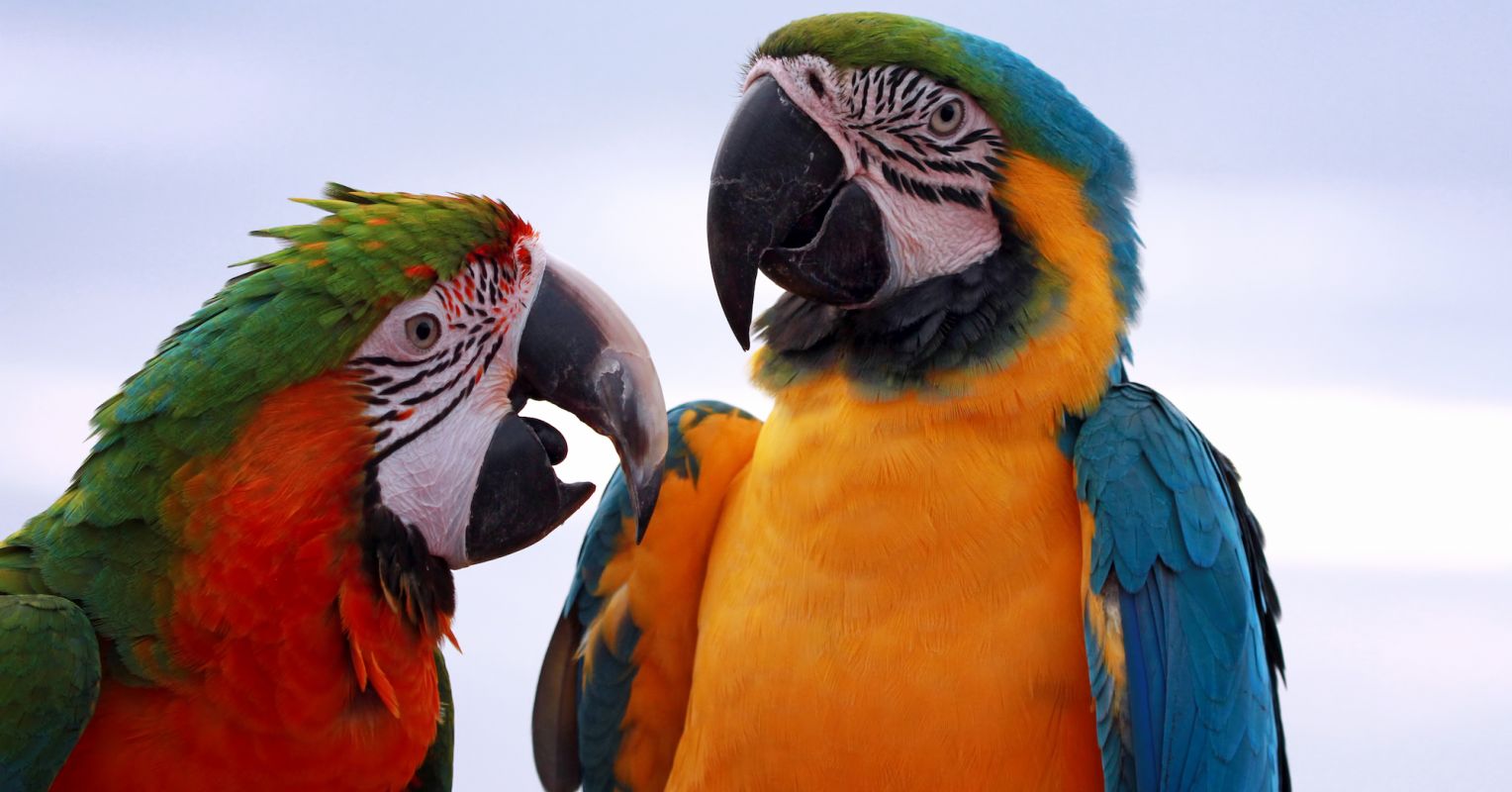970x125
Scroll through social media long enough and you will encounter them: macaws swaying to pop songs, flapping their wings as though swept up in the joy of rhythm. These clips are delightful because they seem so human. We are used to seeing animals reacting to stimuli, like dogs fetching or cats pouncing. But parrots appear to do something more: they join in. They watch, they follow, and they seem to understand the dance as a shared act.
Until recently, it was easy to dismiss these performances as mimicry, clever tricks honed by training or instinct. But new research from the Max Planck Comparative Cognition Research Station suggests the truth may lie elsewhere. Parrots are not just copying movements. They seem to be using a form of learning thought unique to humans: the ability to observe and copy interactions between others without direct instruction.
Watching From the Sidelines
One macaw was cued by a human to perform gestures such as lifting a leg, fluffing feathers, or spinning in place. Next door, behind a transparent screen, another macaw sat watching. After a pause, the human turned to the onlooking bird and gave the same hand signal.
Birds that had watched a demonstrator perform the correct actions more often than those that had not. They learned an average of four out of five gestures, while control birds who never saw demonstrations managed only two. The observers picked up behaviors with greater speed and precision. Some even began copying movements spontaneously before it was asked, as though the rhythm of imitation had already taken hold. It was interpreted as clear evidence that parrots can learn simply by observing.
A Capacity That Supports Culture
In humans, third-party imitation is the soil from which culture grows. A child does not need to be explicitly instructed in social rules. By watching parents, siblings, or peers interact, they absorb the unwritten grammar of behavior, of when to speak, how to respond, and what gestures carry meaning. These conventions accumulate across generations, giving rise to rituals, traditions, and cultural continuity.
Until now, scientists believed this kind of learning was uniquely human. For example, chimpanzees rarely copy arbitrary gestures. Dogs, domesticated for millennia and trained to obey human cues, failed when tested under similar conditions. Yet macaws succeeded.
Macaws live in ever-changing societies, where flocks form and dissolve, and individuals must rapidly integrate. In certain circumstances, imitation may be especially valuable for social cohesion. Evidently, they share an adaptive capacity that supports cultural life in diverse circumstances.
Rethinking Human Exceptionalism
The image of parrots as feathered jesters, repeating words or mimicking tunes, obscures their deeper capacities. These birds live in complex, shifting communities where success depends on learning quickly and fitting in. The ability to pick up behaviors by watching others’ interactions could allow a macaw to adapt seamlessly to a new flock, much as a human newcomer learns customs by observing rather than by being formally taught.
The implications ripple outward. If parrots can transmit behaviors through third-party imitation, then the playful gestures we see, like synchronized head bobs, coordinated flights, and ritualized displays, may not be random quirks. They could be signs of socially learned patterns.
This discovery unsettles a comfortable story we tell ourselves: that culture, and the imitation that sustains it, belongs exclusively to us. Perhaps culture is not a sudden leap unique to humans, but a wider biological possibility that emerges wherever social life is rich and fluid enough to demand it. Animals as diverse as birds and octopuses show us that such behaviors are not isolated quirks but part of a broader pattern of intelligence. When a macaw dances in rhythm with its companion or spins in response to a hand gesture, it sees another bird follow; it is not simply mimicking. It is demonstrating a power that allows living beings to connect, to share, and to belong. Seeing these capacities in other species gives a deeper understanding of human evolution, suggesting that animals may share many traits of human consciousness and perhaps even self-awareness. The thought occurs that we should value all of these, and not disregard these complex behaviors as trivial. Instead, we should interpret them as points along a continuum of which we ourselves are a part.



